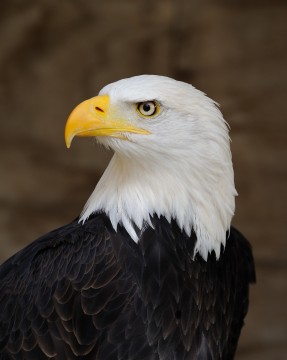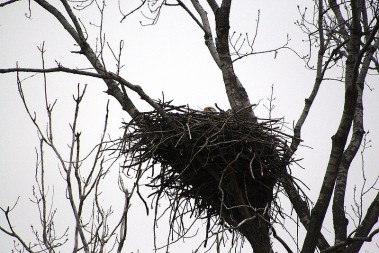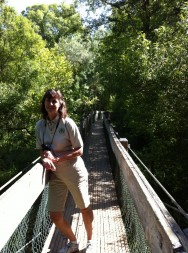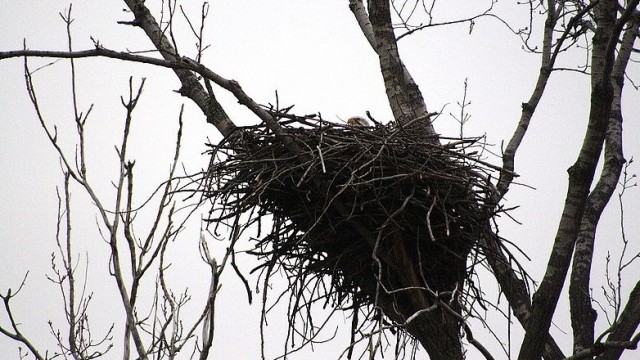
In honor of our nation’s birthday, I thought I’d share a local story of our national symbol. We have a nesting pair of bald eagles at Lake Chabot Regional Park above San Leandro in the East Bay. The young couple, with the female only about four years old, hatched their eaglet on Earth Day. It’s expected to fledge with its first flight attempts around the Fourth of July.
This is a noteworthy event as bald eagles once neared extinction. Unique to North America, by the 1970s bald eagles were on the brink of extinction with only about 500 nesting pairs left from the original estimate of half a million birds found in 45 of the 48 states. Their numbers had plummeted due to poisoning with DDT and lead, as well as shooting and habitat loss. Over the last 40 years, they’ve rebounded and they’re now off the Federal Endangered Species list, though still endangered in California. The Migratory Bird Treaty Act and the Bald and Golden Eagle Protection Act provide protection against hunting. Bald eagles took up nesting in the Bay Area in 1996 and now have a pair at about four of our larger lakes and reservoirs. They need about two square miles for a hunting territory. If you’re fortunate, you might witness their spectacular courtship and territorial displays, which include pairs locking talons and plummeting toward earth in a twirl of six-to-seven foot wingspans.

What will happen to the bald eagle fledgling once it leaves the nest? In my reading about eagle migration, the young seem to migrate away without parental direction and have about a 50-50 chance of survival in their first year. Some young California eagles have been found as far north as Alaska in their first year. Imagine catching rising thermals and letting them carry you to the far ends of our continent! Bald eagles reach maturity at four years and mate for life. If the mate dies, though, they will take another and can live for about 30 years in the wild. Their hunting prowess lies in their keen eyesight with a double focal point that allows them to see to the side and also ahead of them. They can spot a fish or squirrel from a mile above. They’re also highly adaptable and not above scavenging dead animals or thieving from others. Adaptability, instead of nobility, oftentimes predicts survival success.

If you want to see the eagles, they’ll likely hang around Lake Chabot for some time, perhaps with the young fledgling testing its wings and fishing skills. You can take either the East Shore or the West Shore trails from the Marina for great views of the lake. On my last two walks at Lake Chabot I kept an eye out for the famous pair, but didn’t spot them either time. Instead we were treated to whooping calls from mating pied-billed grebes, young great blue herons flapping about on the island with parents feeding them, a black skimmer dipping its bill to fish as it flew inches above the water and a hummingbird nest hanging at eye level far back on the East Shore Trail. I hope you get a chance to get out on the trail during these long summer days and enjoy special sightings like the bald eagles as well as the extraordinary treats found in the ordinary doings of nature!
Additional Links:
Lake Chabot Bald Eagles news release with video footage of eagles
